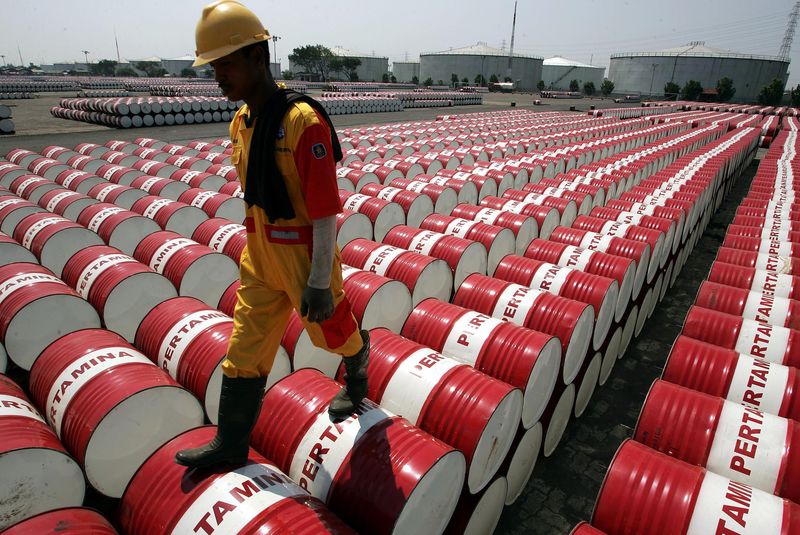Investing.com - Oil prices were higher in North American trade on Tuesday, reversing overnight losses, as investors looked ahead to fresh weekly information on U.S. stockpiles of crude and refined products.
The American Petroleum Institute will release its inventories report later in the day, while Wednesday’s government report could show crude stockpiles fall by 2.5 million barrels in the week ended May 20.
Prices were lower earlier in the day on signs that supply disruptions in Canada and Libya are coming to an end.
Media reports saying that Iran plans to increase oil export capacity to 2.2 million barrels by the summer and has no intentions to freeze its level of oil production at the upcoming OPEC meeting also contributed to the bearish sentiment.
Crude oil for July delivery on the New York Mercantile Exchange fell to a session low of $47.64 a barrel before turning higher to trade at $48.42 by 12:35GMT, or 8:35AM ET, up 34 cents, or 0.71%. A day earlier, New York-traded oil futures lost 33 cents, or 0.68%.
Nymex oil prices are up nearly 80% since falling to 13-year lows at $26.05 on February 11 as declining U.S. shale output boosted sentiment. However, with prices now at levels that make drilling economical for some firms, the oil rig count might start rising soon and the decline in U.S. production may slow.
According to oilfield services provider Baker Hughes, the number of rigs drilling for oil in the U.S. was unchanged at 318 in the latest reporting week, after eight straight weeks of declines.
Elsewhere, on the ICE Futures Exchange in London, Brent oil for July delivery tacked on 24 cents, or 0.5%, to $48.59 a barrel after falling to a daily low of $47.80.
On Monday, London-traded Brent futures shed 37 cents, or 0.76%, amid easing concerns over global supply outages.
Oil futures have been well-supported in recent weeks due to a combination of Nigerian, Libyan and Venezuelan supply outages, as well as reduced production of Canadian crude as a result of fires in Alberta's oil sands region. However, as some of the supply disruptions are subsiding, traders are putting their focus back on the growth of global oil supply.
Brent futures prices are up by roughly 85% since briefly dropping below $30 a barrel in mid-February, despite the collapse of talks at a Doha summit in April aimed at achieving a production freeze among OPEC and Non-OPEC producers. OPEC meets on June 2 in Vienna and may discuss the freeze initiative again.
Meanwhile, Brent's premium to the WTI crude contract stood at 17 cents a barrel, compared to a gap of 27 cents by close of trade on Monday.
